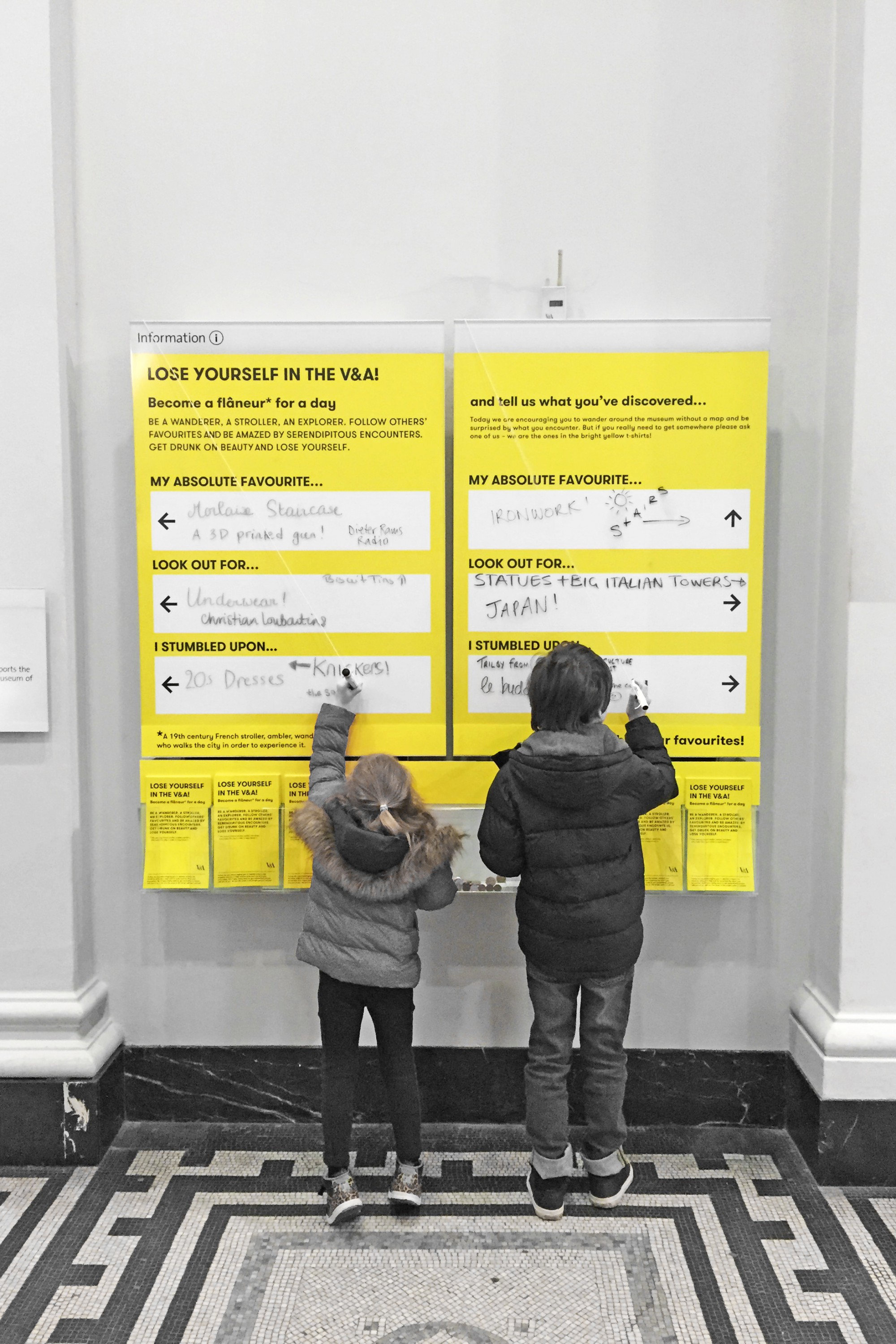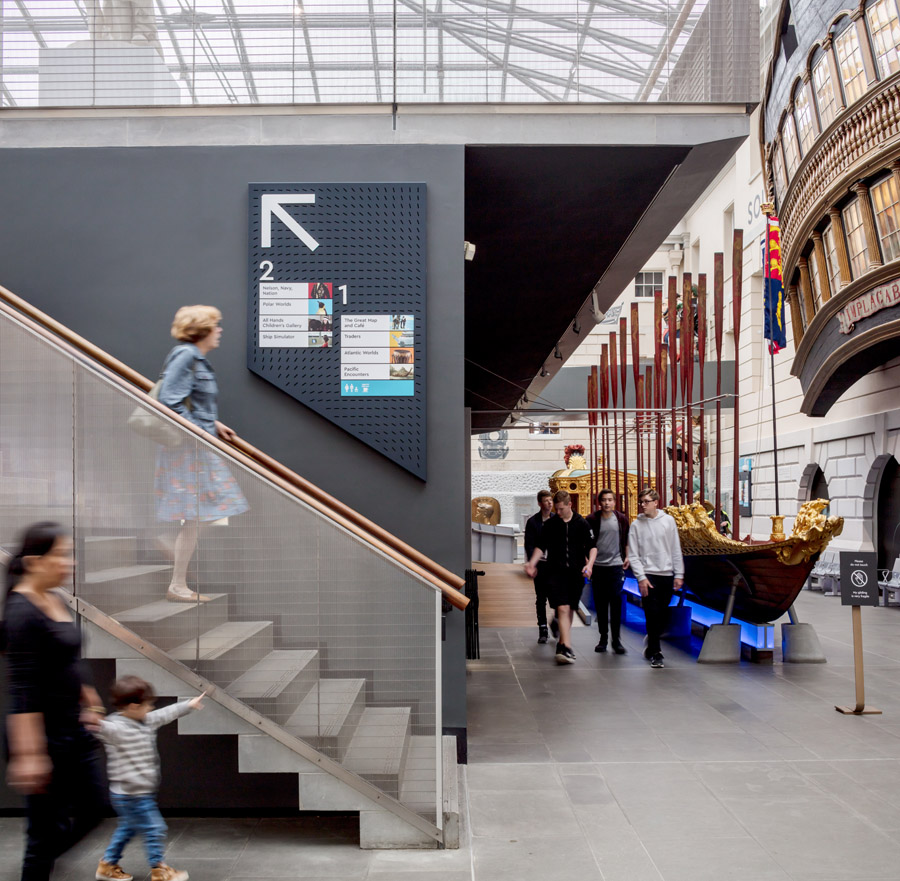Getting your visitor off the beaten track using behavioural design to influence exploration
Do you ever see your visitors looking a bit confused or lost? Ever wondered why so many visitors never make it past the first exhibition space and the cafe? Frustrated that you have some amazing experiences and spaces that few people ever seem to get to?
Read on - this is the first in our series of Behaviour Change articles - where we will take a look through a behavioural lens at real-life problem spaces. We will be discussing some of the challenges we have observed in the Culture and Heritage sector, from talking to visitors, organisations and other experts in the field.

To kick off we are looking at exploration, or should I say, a lack of it. A common challenge we hear is “How do we encourage visitors to venture further than the well-trodden path between the entrance, one key drawcard exhibition and the café?” It is common when looking at visitor movement to see that whole areas of museums and other venues can be underutilised. As an example, during a recent project at the National Maritime Museum in Greenwich, the challenge they identified in the brief was to: Encourage exploration and discovery - to facilitate more visitors to move up through the levels and to explore the galleries more widely, and to find the brand new exhibition spaces.
This type of challenge does not typically find answers in traditional approaches such as pedestrian flow modelling - which uses sophisticated technology to model capacity flows of people as dynamic “actors” that move in predictable ways. This tells you what theoretically “should happen”. There are also measuring methods like “people counting” which tells venues “what” is happening...but it doesn't tell them why people do what they do. What we know, is that people aren’t always entirely rational in their decision-making and may be swayed by other forces. Particularly in cultural settings where a) people aren’t always moving along a defined “operational pathway” as they might be in a busy transport hub, and, b) buildings and grounds are often historic and not optimised for accommodating and guiding people flows. We have found that these types of challenges may be best tackled with an alternative approach, one grounded in the understanding of human behaviour and influence.
To set the scene - Behaviour change is the practice of applying behavioural science principles to design challenges to understand not just what people's behaviour is, but why it may be occurring (choices, motivations and influences) - then applying designed interventions to influence and change behaviour to lead to better outcomes.
With a Behaviour-led approach, it starts with strategic workshops with stakeholders to understand the perceived problems and challenges and to set targets for a desired outcome. We then plan and perform on-site research to build empathy and a deep understanding, deploying a selection of research techniques that gather human-led data, for example; observation, tracking, intercepting and enquiring. We also use more objective tools such as eye-tracking technology. This multi-faceted data collection phase allows us to build a richer understanding of the target audience, what actions they are taking and why - what their motivations and goals are, what their thoughts and desires are, and what might be holding them back. From here, we analyse and map visitor journeys and identify their drivers of behaviour and potential barriers to change.
There can be space to test out novel concepts including in visitor engagement and visitor research. At the V&A museum in London, whilst performing a research project into visitor exploration, we got the opportunity to be provocative, using action research techniques to open up new conversations. We took over the museum for an experimental day of alternate reality. We covered ALL THE MAPS and replaced them with large-scale community discovery boards - where visitors and staff were encouraged to share and engage with one another: writing and sketching favourite moments and recommendations for “must see'' exhibits to pass it on to fellow visitors. We also switched out standard handout maps with a sensory map - prompting visitors to wander and be guided by emotive descriptions of exhibits. This fun, immersive experience drew out new ways of exploring, forged new connections between visitors (and staff) and the exhibits and injected a fresh childlike curiosity and sense of adventure. We found insights that could be fused into future wayfinding, mapping and visitor experience communications: for example, we saw that the way people plan and explore museums and galleries varies wildly depending on their personality type, who they are with and how much time they have. We need to bear this in mind as we welcome visitors - particularly in those initial moments of orientation and planning. We should offer choices and different engaging ways for visitors to access collections and explore on their own terms.

As the behavioural approach steps into ideation and intervention design, we often utilise Behaviour Change techniques alongside our complementary disciplines of Wayfinding and Information design, Experience Design and Inclusive design - we apply behavioural science-led change techniques to craft customised interventions with a focus to influence the target behaviours. Whilst each cultural destination will have a unique setting, layout and offering - that may call for an equally uniquely crafted solution. The high-level principles we would first look to, in order to encourage visitor exploration would be change tactics that focus on the following attributes:
Making it easy - reducing barriers for Visitors to try new things, providing clear messaging. Provide orientation information that allows visitors to engage and explore collections in ways that suit them and their preferences.
Making it attractive - provide cues and clues in the environment with salient colours and engaging, relevant images that drive curiosity and exploration.
Making it social - provide visitors with social cues to explore by showing them that others like them are exploring new areas and exhibits.
Providing timely prompts in the environment that nudge visitors toward target exhibits and attractions. Deploy techniques that add variation and interest to disrupt habits of returning guests - prompting new fresh experiences.
Behaviour is influenced by the surrounding context - for this reason, it can be difficult to predict with absolute certainty - we advise that it can be beneficial to prototype and test new interventions - often running simple pilots and measuring impact can enable you to tell what is having an effect and landing with visitors - providing an opportunity to tweak and improve aspects of the intervention to deliver the identified change.
To provide some real-life examples of how we designed using behavioural insight to encourage exploration, we return to the National Maritime Museum:
The previous wayfinding system consisted of long lists of exhibits at each decision point which we identified as as providing overwhelming choice. We simplified and decluttered the signs, roughly halving the information, making choices EASIER.
The new signage system integrated “Hero” images of key memorable pieces from the museum collection, previewing what can be discovered in each gallery space. The bold images ATTRACT attention and act as enticing cues that harness the psychological “priming effect”, to simply nudge visitors to move from gallery to gallery knowing they will find something interesting.
The call-out images addressed an identified visitor problem - they made key pieces findable in an approachable way, without needing in-depth knowledge of collections or resorting to asking staff - this better-suited visitor needs, making it EASIER to explore on their terms.
We also highlighted the building levels with large super graphics in the central triple-height courtyard and at the stair and lift access points, to act as subliminal PROMPTS to break down some of the apparent barriers between building levels and encourage visitors to move up through the building to access more of the galleries.

If you are responsible for visitor experience and want to see your visitors explore and engage more widely with the extent of your collection or grounds - increasing utlisation of gallery space (capacity) and deepening visitor engagement, then we hope this article gives you a taster of what can be achieved by harnessing the power of a Behaviour Change approach.
Want to know more or to discuss how this might be applied to your setting - please get in touch.
Written by:

Adam Parkes
Principal Human Factors Consultant
Adam has extensive experience providing user centered design insight to complex and challenging design programmes in airports, transport hubs and public buildings. Adam gets to the heart of the user experience and understands how the design can meet their needs to be effective, efficient and inherently intuitive.